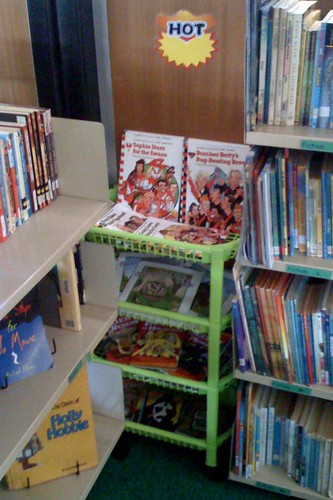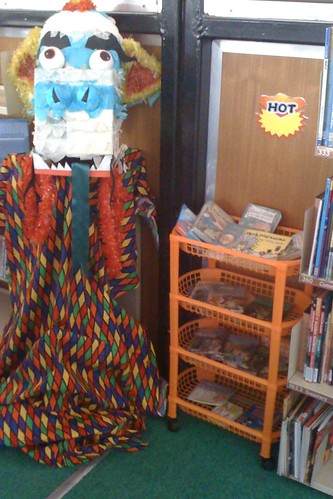Lots of NSW DET school libraries seem to be preparing to pack up everything for longterm (temporary) storage while their new BER libraries are built on the site of portable buildings.
That will be happening here, too, but we haven’t been given evacuation orders yet.
A teacher librarian of my acquaintance asked about the security and weather-tightness of the supplied storage container, and was worried about the condition of the books when they emerge. nd what about the potential for vandalism of the container
I say, “Why worry?”
Many, many people store their possessions in large shipping containers for years on end – and most of our imported books arrive in Australia in the same type of shipping containers, surviving three months of perilous seas and weather. If some books get damaged, well… they get damaged. I suggested they think of this whole experience as an enforced cull. If necessary, make the insurance claims and then buy new resources to replace the damaged ones. Or simply have a smaller collection.
I did a massive cull of huge, dusty old hardcover tomes (and el cheapo, yellowing, brittle, 1970s paperbacks) at a school when we converted it to OASIS from a card catalogue in the 1990s. We cleared the shelves of hundreds of books, much to my principal’s horror – and yet our borrowing rates went way up!
(In any case, if vandals want to destroy library books, they’d have a much better time waiting till the new library is built. Vandalising books in a storage container is hardly much fun. Too much like shooting ducks in a barrel.)
Think positive: visualise our wonderful new school libraries – and spend the intervening months as a roving TL, getting to know the teachers on their own turf (ie. in their own classrooms!) – and plotting and planning how to maximise the learning possibilities of the new library when it arrives.
As for me, I’m really looking forward to plotting, planning, packing and roving – sometime in 2010!



